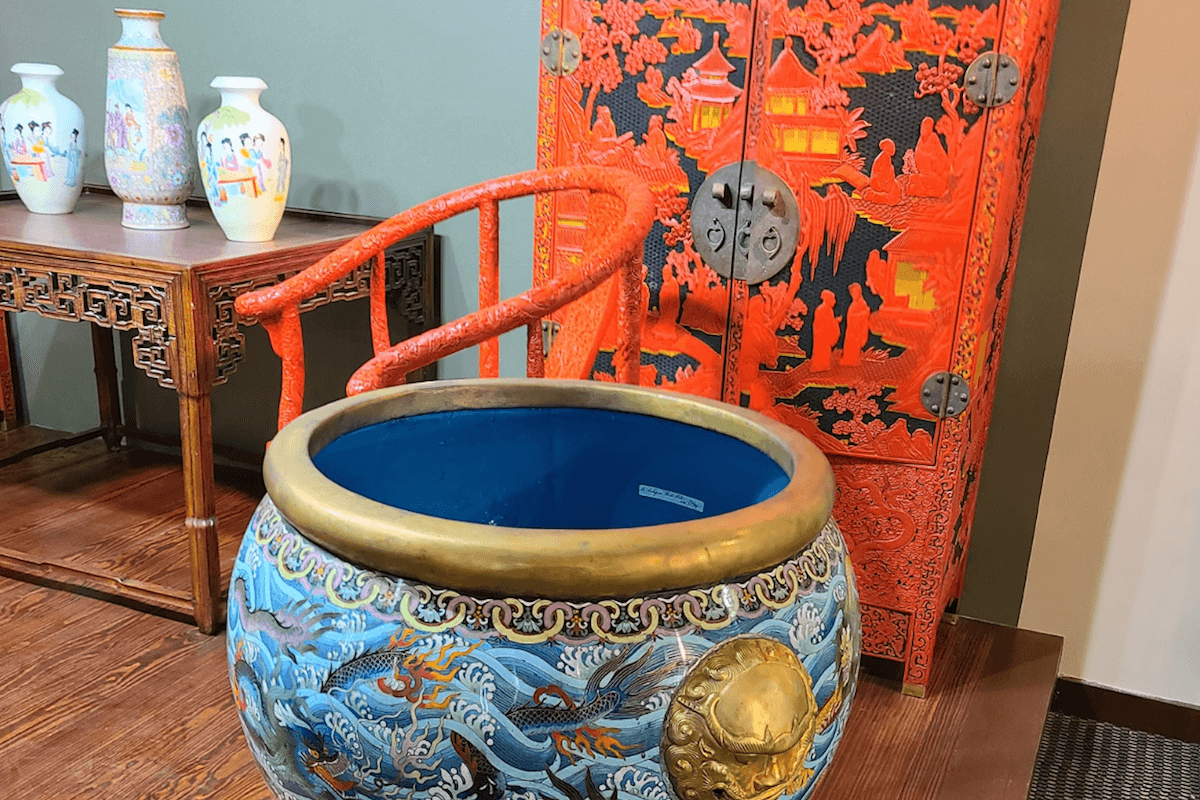Tucked in Downtown Memphis, the Belz Museum of Asian & Judaic Art offers a journey across continents and centuries in a single afternoon. From Qing Dynasty jade masterpieces to ivory carvings and embroidered silk robes, this museum bridges cultures with beauty, reverence, and unexpected grandeur.
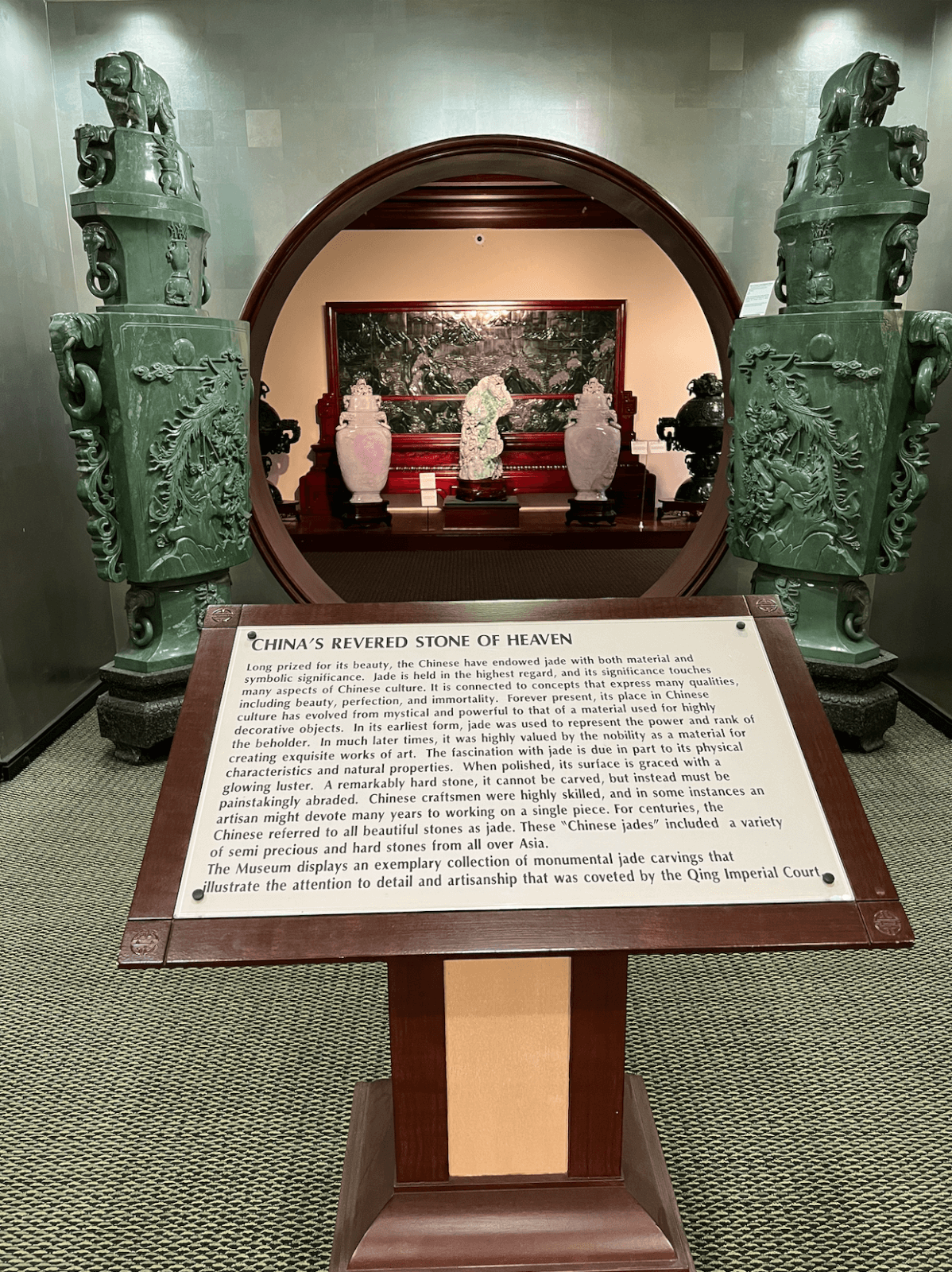
A Cultural Treasure in the Heart of Memphis
Nestled in the Concourse Level of Peabody Place along South Main Street, the Belz Museum is a true hidden gem. I wasn’t quite sure what to expect as I descended the stairs and stepped into the cozy gift shop, but as the welcoming staff pointed me toward the galleries with a friendly tip to wave at a camera if I got lost, I knew I was in for a treat. Just down the hall, I was immediately struck by a sense of grandeur — two Chinese guardian lions stood at the entrance, offering symbolic protection and setting the tone for what lay ahead.
From there, the awe only deepened. The museum spans 14,000 square feet and houses nearly 1,000 intricately detailed objects. Its three main galleries — the Main Gallery with Judaic Section, the Tusk Gallery, and the Imperial Retreat Gallery — are thoughtfully curated and visually stunning. The collection’s centerpiece is an extraordinary array of jade sculptures, many from China’s Qing Dynasty (1644–1911), which earned the museum its unofficial nickname, “The Jade Museum.”
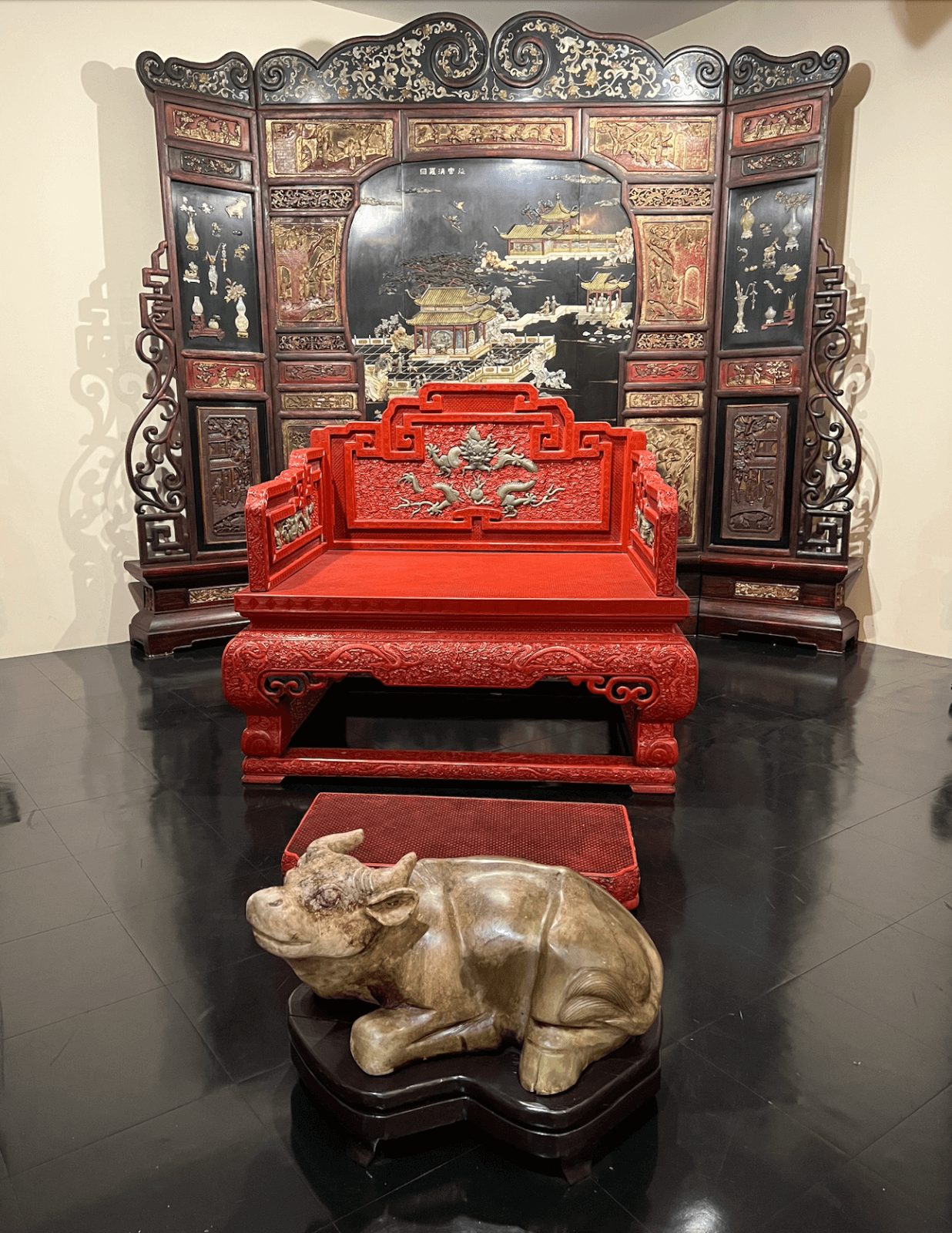
The Belz Museum turned out to be the unexpected highlight of my weekend trip to Memphis. I left feeling both inspired and eager to return. Below is a glimpse into the museum’s remarkable galleries, along with a few personal reflections from my time exploring this one-of-a-kind space.
The Story Behind the Museum
The Belz Museum was founded in 1998 by Jack and Marilyn Belz. Guided by their philanthropic spirit and a shared passion for art, the couple transformed what began as just three modest rooms into the expansive, thoughtfully curated museum it is today. Many of the works on display even come from the Belzes’ personal collections. The result is a powerful reflection of their lifelong dedication — a true labor of love that has become a lasting cultural legacy in Memphis and beyond.

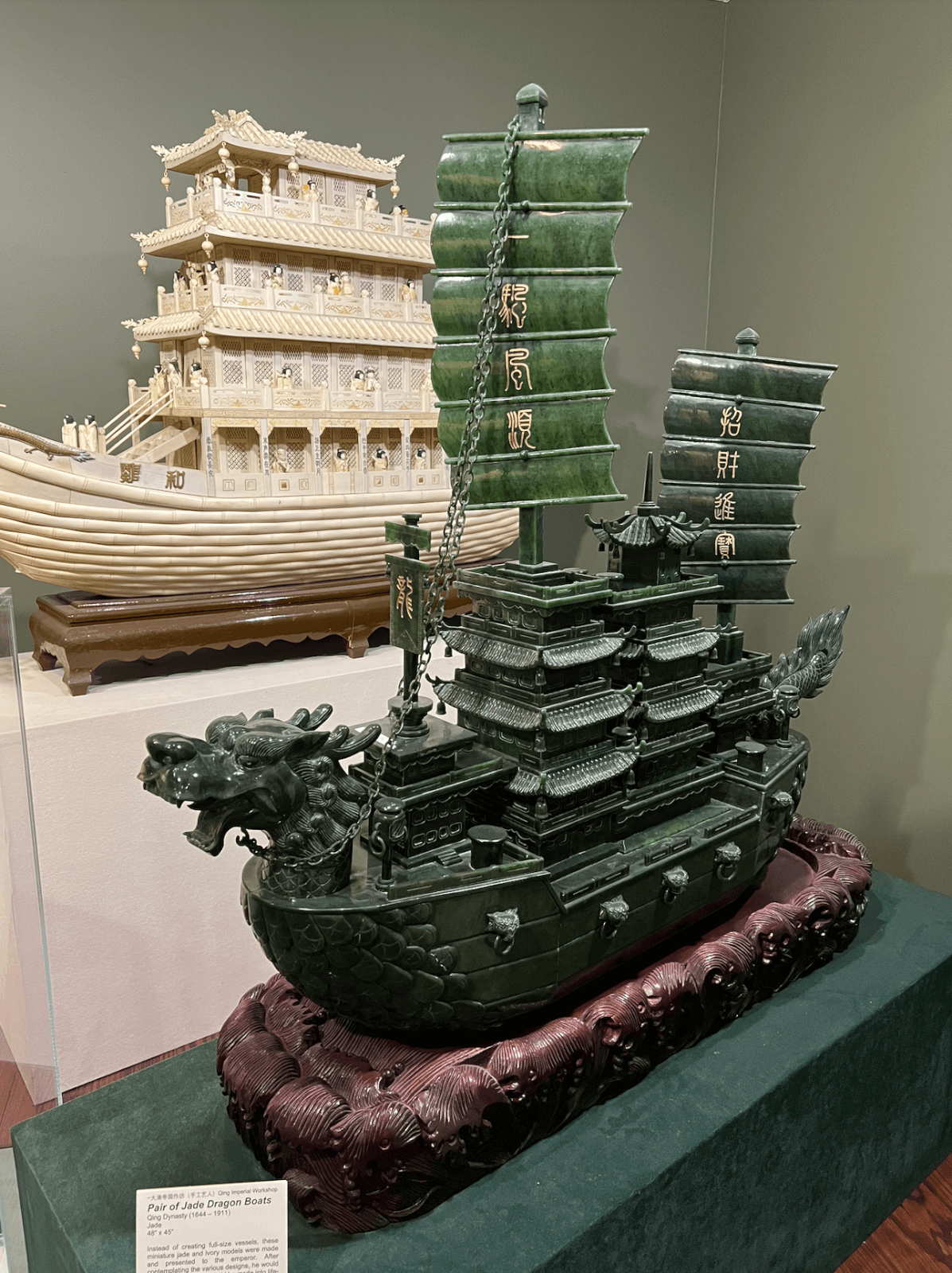
A Look Inside the Galleries
The museum offers a dual cultural focus, showcasing Asian and Judaic art in distinct, immersive galleries. In the Judaic section, guests will find meaningful works that include an original piece by Jack Belz himself, alongside commissioned artworks created by artists with personal ties to the Belz family.
The Tusk Gallery highlights intricately carved ivory sculptures, blending historical craftsmanship with mythological storytelling and fine detail. Meanwhile, the Imperial Retreat Gallery transports visitors to the Qing Dynasty, featuring emperors’ chairs, embroidered ceremonial attire, ornate dragon boats, and towering jade screens — each piece a striking testament to China’s artistic legacy.

Jade: China’s Stone of Heaven
For thousands of years, jade has been revered in Chinese culture — prized as more precious than gold and believed to possess supernatural qualities and a deep connection to nature. Emperors used it to honor heaven and earth, from whom they believed their divine right to rule was granted. Jade was even powdered and ingested to promote longevity and ward off illness. Reserved for the highest honors, it served as the medium for gifts of reverence, emblems of merit, and imperial Seals of State.
The Chinese character for jade, yù, symbolizes the link between heaven and earth. Across dynasties, jade was worn to reflect virtue, crafted into sword fittings to signify nobility, and carved into animals and mythical beasts as a testament to exceptional craftsmanship.

Experiencing the Belz Museum
The Belz Museum strikes a rare balance of grandeur and intimacy — a peaceful, almost otherworldly escape tucked right into the heart of the city. The friendly staff made me feel welcome from the start, and the quiet, warm atmosphere invited me to slow down and truly absorb each piece.
Among the many standouts, I was especially captivated by the jade dragon boats — so detailed and delicate, they felt like something out of a dream. I also lingered at the jade mountain scenes depicting flowing waterfalls, peach trees, and miniature figures in serene landscapes. Ornate silk robes and elaborate ivory carvings added to the museum’s rich sense of history and craftsmanship.
One of my favorite surprises was the interactive art stations placed throughout the space, encouraging guests to sketch their impressions. It was a thoughtful touch that made the experience feel even more personal and inspiring.
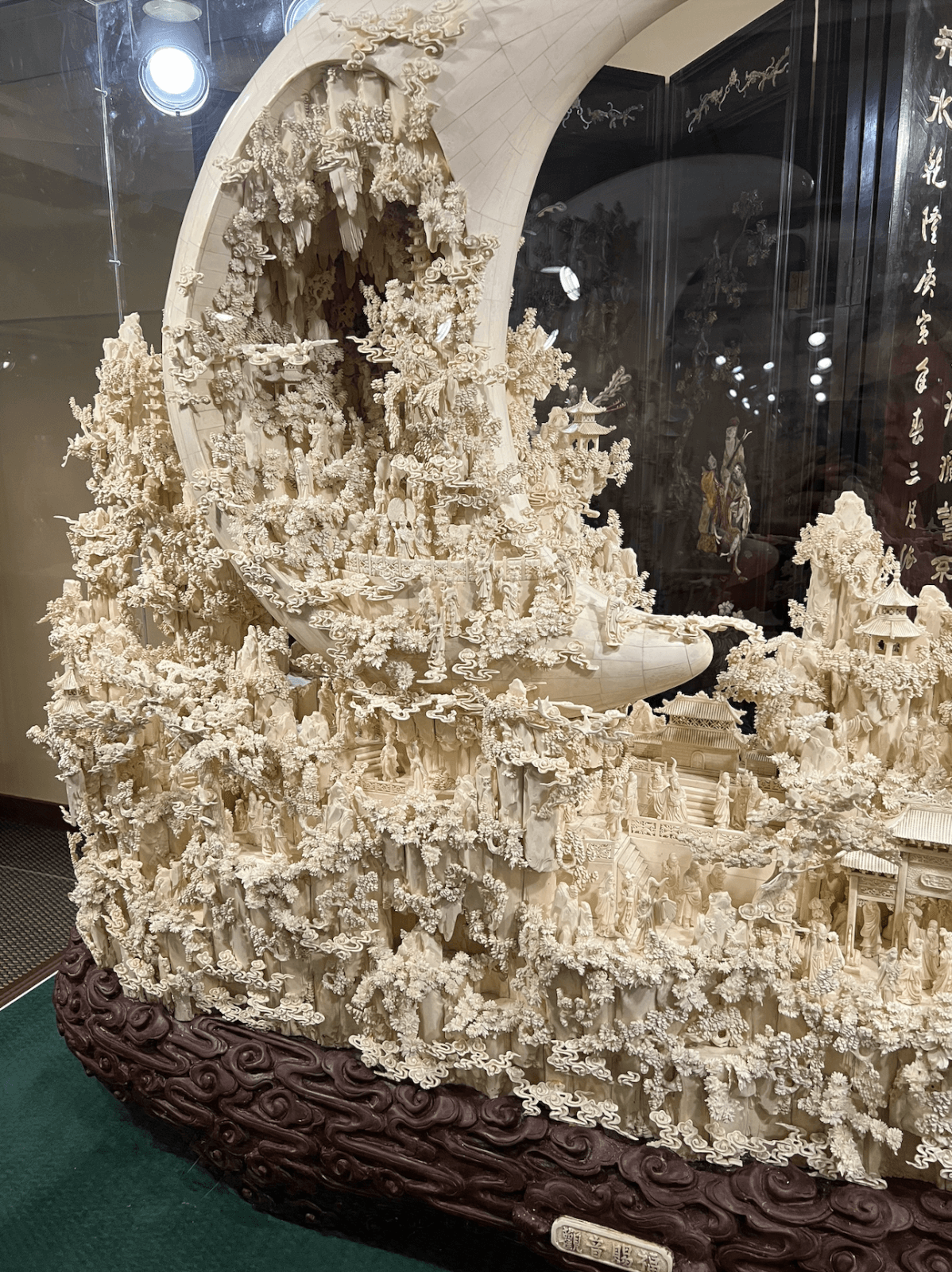
Plan Your Visit
Guided tours are available and ideal for group visits or cultural enrichment outings, offering a deeper understanding of the museum’s dual focus. Plan to spend one or two hours exploring; it’s a perfect way to spend a rainy morning or afternoon. The Belz Museum is open Wednesday through Friday, 10 a.m. to 5 p.m., and Saturday and Sunday, noon to 5 p.m. Admission is $6 for adults, $5 for seniors, $4 for students, and free for children under five.
Don’t miss this impressive Memphis museum!
**********
To stay in the know on the best of the South, subscribe to our daily emails!



















